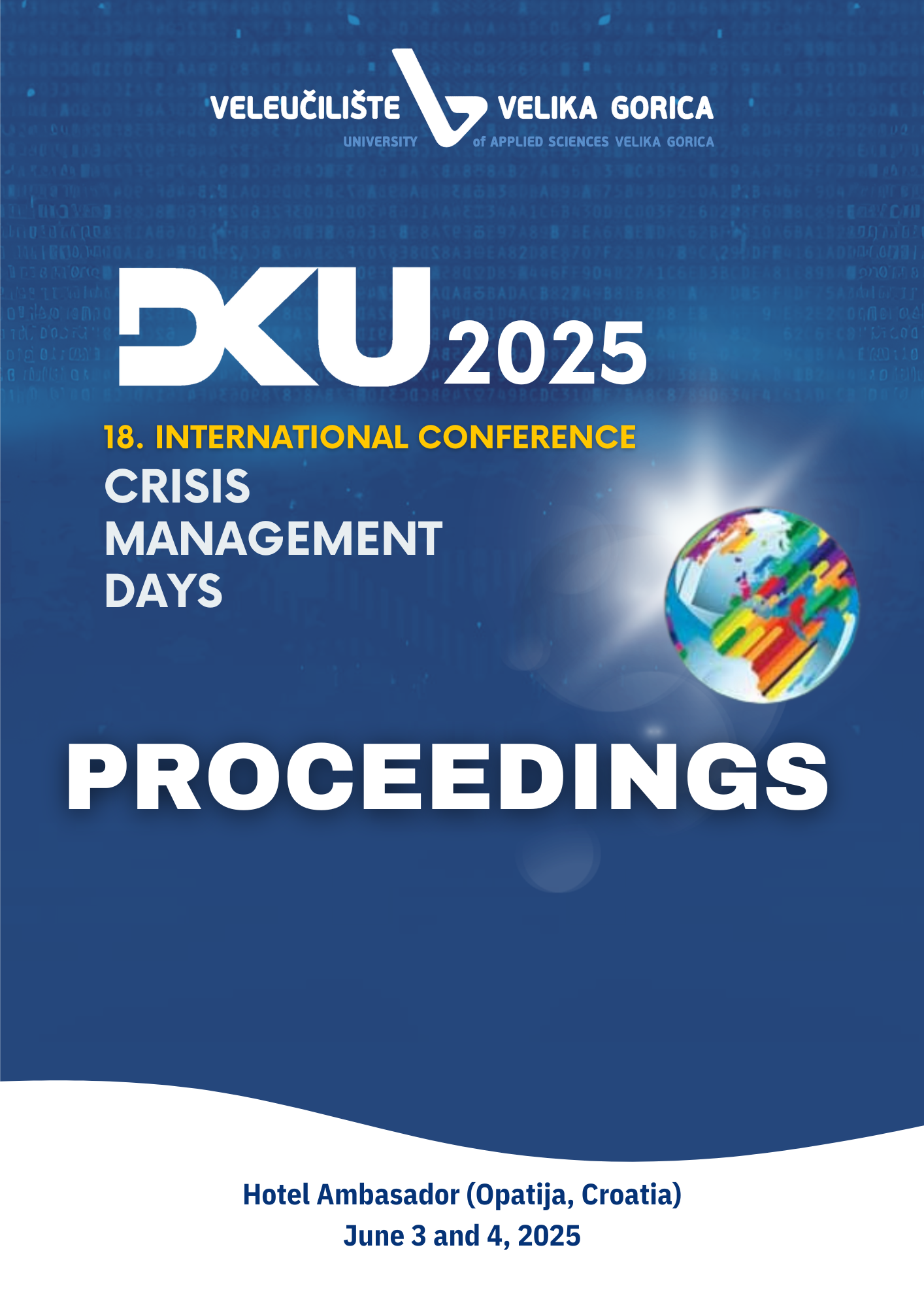Integrative Approaches to Urban Security: The City of Zagreb’s Strategy for the period 2025-2030 and the Role of Community-Based Prevention
Published 2025-11-16
Keywords
- Urban Security,
- prevention,
- City of Zagreb,
- prevention councils,
- perception of safety
- integrated governance,
- citizen participation ...More
How to Cite
Copyright (c) 2025 Dunja Zlomislić

This work is licensed under a Creative Commons Attribution-ShareAlike 4.0 International License.
Abstract
The paper provides an overview of the strategic approach to urban security using the example of the City of Zagreb and recent international research, to present methodological frameworks and the social and scientific contributions of the urban security concept. By outlining the development process of the Urban Security Strategy for the City of Zagreb for the period 2025–2030, this paper explores key security challenges in contemporary urban environments, including crime, cyber threats, climate risks, and citizens' perceptions of safety. Special emphasis is placed on the importance of an integrated approach, community participation, and the role of local prevention councils. Urban security is increasingly recognized as a crucial component of the sustainable and resilient development of European cities. This approach is encouraged by EU recommendations on strengthening local resilience and risk management. Each city should develop local policies that ensure safe living conditions and an improved quality of life for its citizens. In this context, particular importance is given to prevention councils within city districts as key actors in identifying community needs and implementing safety measures at the level of local self-government. The Urban Security Strategy of the City of Zagreb defines local and regional self-government units as responsible for specific measures, with an obligation to integrate them into local regulations, annual plans, and budgets. The Strategy was adopted by the City Assembly of Zagreb and published in the Official Gazette of the City of Zagreb No. 40/24. The City of Zagreb implements its authority through local and district self-government bodies and municipal administrative services, enabling the implementation of comprehensive and integrated security policies. In this way, the alignment of security measures with local needs and development priorities is ensured.
The Urban Security Strategy of the City of Zagreb incorporates both horizontal and vertical coordination, connecting local stakeholders with national security frameworks.
Keywords: urban security, City of Zagreb, prevention, prevention councils, perception of safety, integrated governance, citizen participation
References
- Borovec, K. (2013). Development of crime prevention councils in the local community toward sustainable and effective coalitions. Police and Security, 22(1), 1–25.
- City of Zagreb. (2014). Urban Security Strategy of the City of Zagreb for the period 2014–2017. City of Zagreb
- City of Zagreb. (2017). Development Strategy of the City of Zagreb until 2020. City of Zagreb
- City of Zagreb. (2024). Urban Security Strategy of the City of Zagreb for the period 2025–2030. https://zagreb.hr/strategija-urbane-sigurnosti-grada-zagreba-za-peri/205971
- Cozens, P., & Love, T. (2015). A review and current status of Crime Prevention Through Environmental Design (CPTED). Journal of Planning Literature, 30(4), 393–412.
- Cozens, P., Saville, G., & Hillier, D. (2005). Crime prevention through environmental design (CPTED): A review and modern bibliography. Property Management, 23(5), 328–356.
- Edwards, A., Hughes, G., & Lord, N. (2013). Crime prevention and public safety in Europe: Challenges for comparative criminology. In S. Body-Gendrot, R. Levy, & M. Hough (Eds.), The handbook of European criminology. Routledge.
- Feinberg, M. E., Greenberg, M. T., Osgood, D. W., Sartorius, J., & Bontempo, D. (2007). Effects of the Communities That Care model in Pennsylvania on youth risk and problem behaviors. Prevention Science, 8(4), 261–270. https://doi.org/10.1007/s11121-007-0073-6
- Hawkins, J. D., & Catalano, R. F. (1992). Communities that care: Action for drug abuse prevention. Jossey-Bass.
- Khaliji, M. A., & Jafarpour Ghalehteimouri, K. (2024). Urban security challenges in major cities, with a specific emphasis on privacy management in the metropolises. Discover Environment, 2, 74.
- Novak, M., Mihić, J. & Bašić, J. (2013). Effective community prevention: Guidelines for the work of prevention councils. Police and Security, 22(1), 26–41.
- Ostojić, A. (2014). In Discrepancy – Essays on Urban (In)Security. Zagreb
- Tonry, M., & Farrington, D. P. (1995). Building a safer society: Strategic approaches to crime prevention. University of Chicago Press.
- UN-Habitat. (2007). Enhancing urban safety and security: Global report on human settlements. Nairobi: United Nations.
- UNDP & Ministry of the Interior of the Republic of Croatia. (2011). Guidelines for the establishment and functioning of local crime prevention councils. Zagreb: UNDP Croatia.
- World Health Organization. (2010). Violence prevention: The evidence. Geneva: WHO Press.

